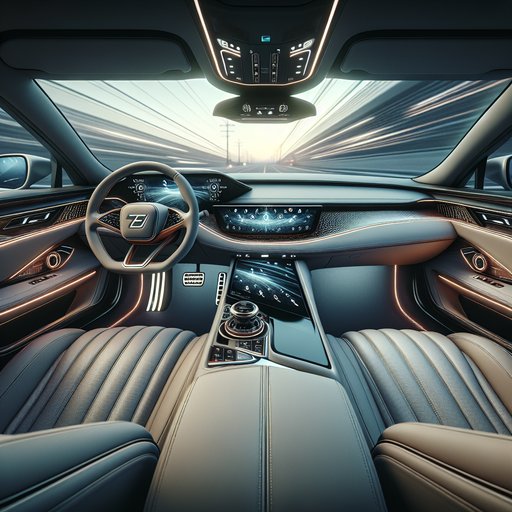
We spent a week and 620 miles in a 2024 Mercedes-Benz E350 4MATIC fitted with the Airmatic suspension and the optional MBUX Superscreen to focus solely on its cabin: materials, technology integration, and long-haul comfort.
Our test car was an E350 4MATIC sedan, powered by a 2.0‑liter turbo four with a 48‑volt integrated starter‑generator (255 hp, 295 lb‑ft). While the drivetrain stayed in the background for this evaluation, the spec matters for context: Airmatic with adaptive damping, rear‑axle steering, multicontour front seats with massage, Burmester 4D audio, and the Superscreen layout (12.3‑inch cluster, 14.4‑inch center display, and optional 12.3‑inch passenger display). Testing covered rough city routes, expansion‑joint‑heavy interstates, and two extended night drives. Ambient temps ranged from 48°F to 82°F.
We used the car as a mobile office—video calls parked, navigation and music streaming underway—and carried two adults up front with two in the rear for most miles to evaluate space, noise, and climate consistency. Material quality is a standout. The dash veneer (open‑pore wood on our car) feels substantial, with precise panel alignment and uniform grain. Switchgear has crisp detents, and the steering wheel buttons avoid the vague, glossy feel some rivals suffer.
The 64‑color ambient lighting is more than mood; it doubles as functional feedback for climate and driver assists. At 70 mph, the cabin remains impressively hushed over coarse asphalt; wind noise is well managed around the mirrors, and we recorded no trim buzzes on broken pavement. Rear legroom and toe room are generous, and the seat base angle keeps longer passengers comfortable. Tech integration is ambitious but mostly intuitive.
The central 14.4‑inch MBUX screen boots quickly and stays fluid; haptic response is immediate and voice commands (“Hey Mercedes”) handle natural requests for temperature, seat massage, and navigation reliably. Wireless Apple CarPlay/Android Auto worked flawlessly during the test with no dropouts. The optional passenger display adds independent media and apps with a camera‑based privacy shield that blanks content from the driver’s angle—effective in practice. Third‑party apps (Zoom/Webex when parked, music streaming, casual games) are there if you want them; the built‑in nav with augmented‑reality guidance remains our pick for accuracy and junction clarity.
Comfort hardware delivers. The multicontour seats offer fine‑grained adjustments, active bolsters, ventilation, and several massage routines that feel purposeful rather than gimmicky. The Energizing Comfort programs sync seat, ambient lighting, fragrance (Air Balance), and audio; we used “Vitality” on late drives and arrived fresher than expected. Airmatic smooths sharp edges without float, and rear‑axle steering shrinks parking‑lot maneuvers while improving lane changes’ calmness.
The Burmester 4D system (17 speakers, 730 watts) adds seat‑embedded exciters—subtle on the default setting—and supports Dolby Atmos; staging is wide, and dialog clarity is excellent at low volumes. Climate control stabilizes quickly, and the cooled wireless charging pad kept phones from thermal throttling. Ergonomically, storage is thoughtful: deep door bins, a configurable center console, and cupholders that grip various bottle sizes. The only nitpick is gloss‑black trim around high‑touch areas—it smudges easily.
Also, while the Superscreen impresses, the sheer feature count demands a day or two to tailor shortcuts and disable what you don’t need. Overall, the new E-Class sets a high bar for midsize luxury cabin execution. If you prioritize ride isolation and tech depth, option Airmatic, the multicontour seats, and Burmester 4D; the passenger display is nice‑to‑have, not must‑have. Buyers seeking a slightly cleaner interface may prefer the BMW 5 Series, but few rivals blend material richness, low noise, and feature breadth this cohesively.
It’s an easy car to spend hours in—quiet, comfortable, and confidently modern.












